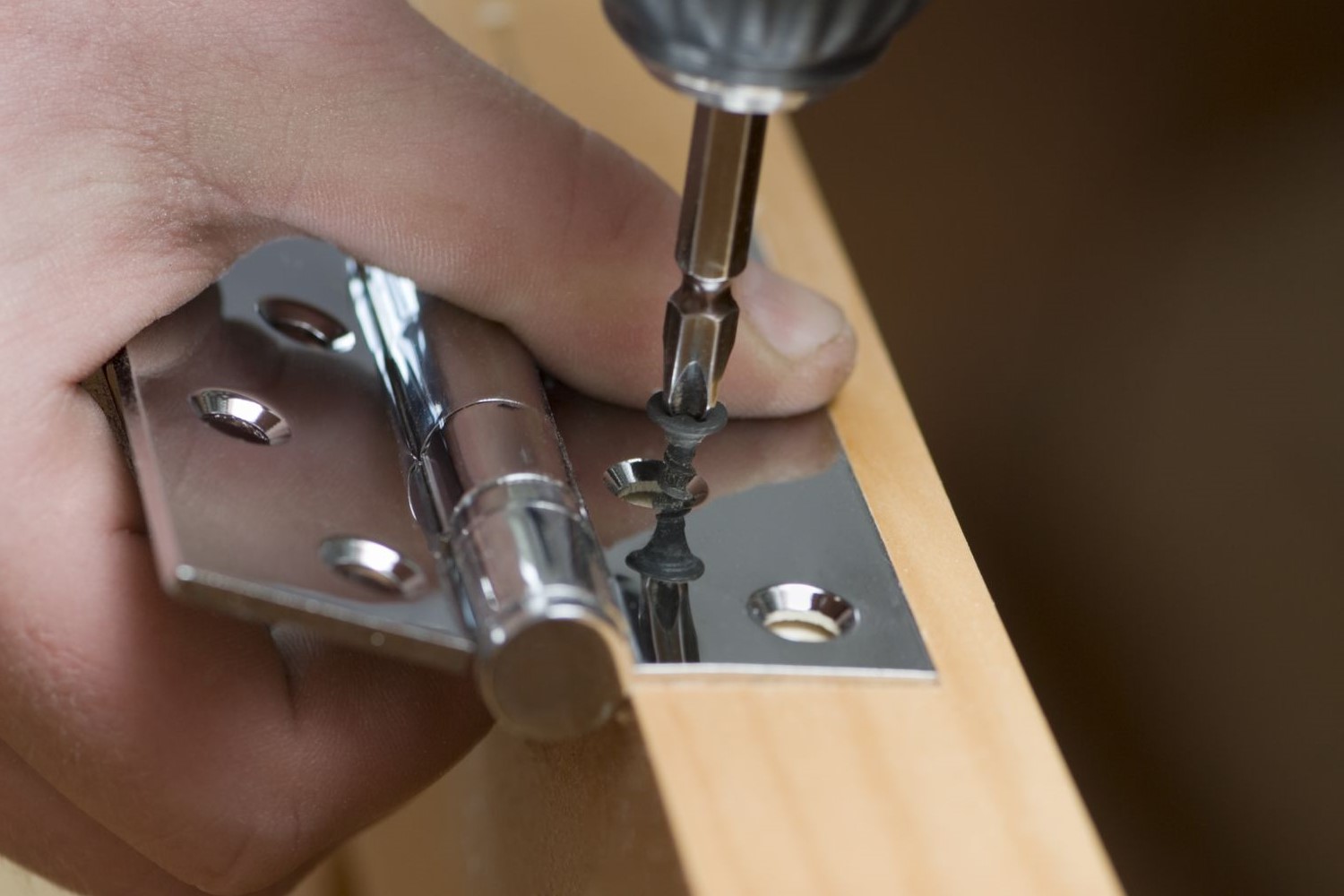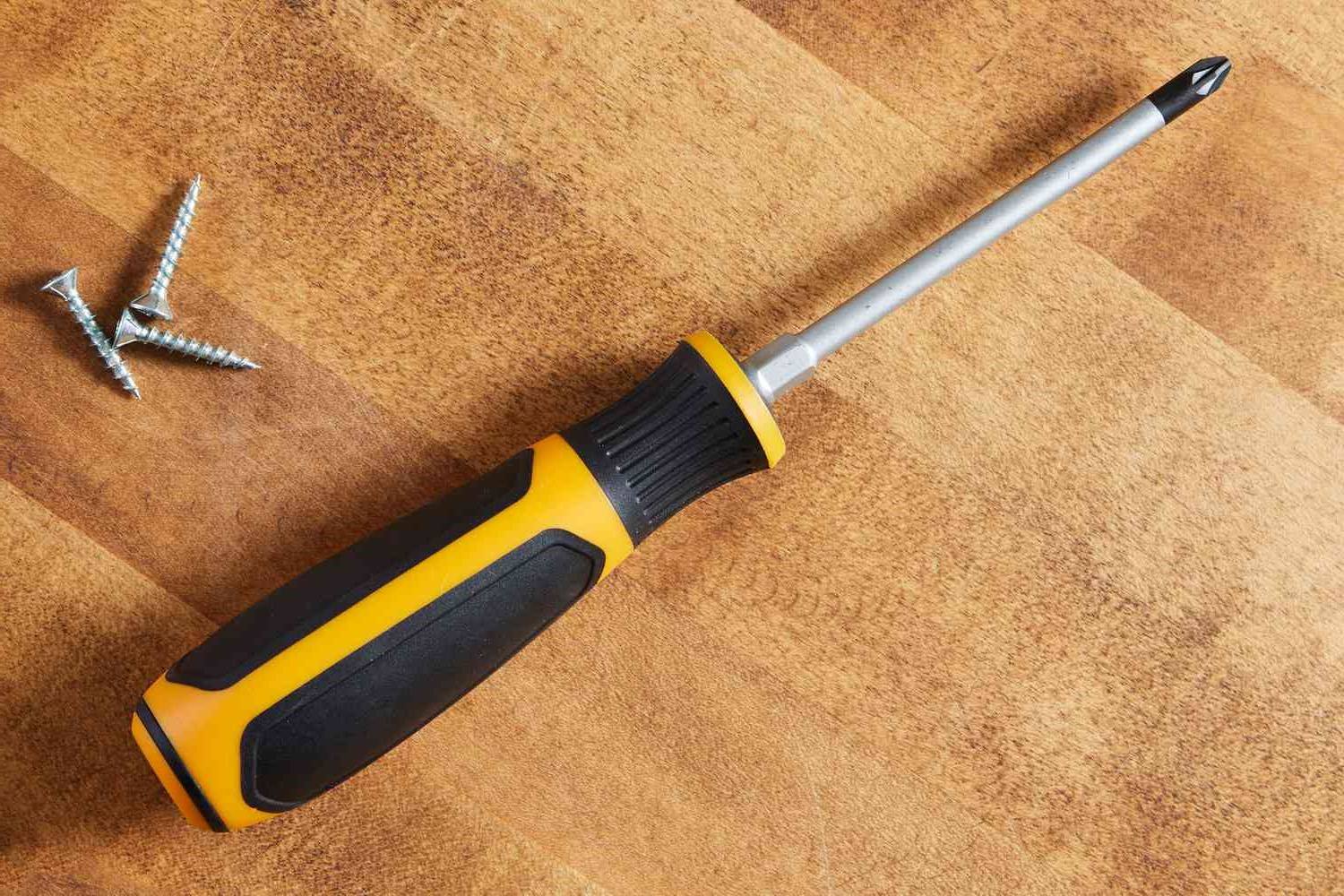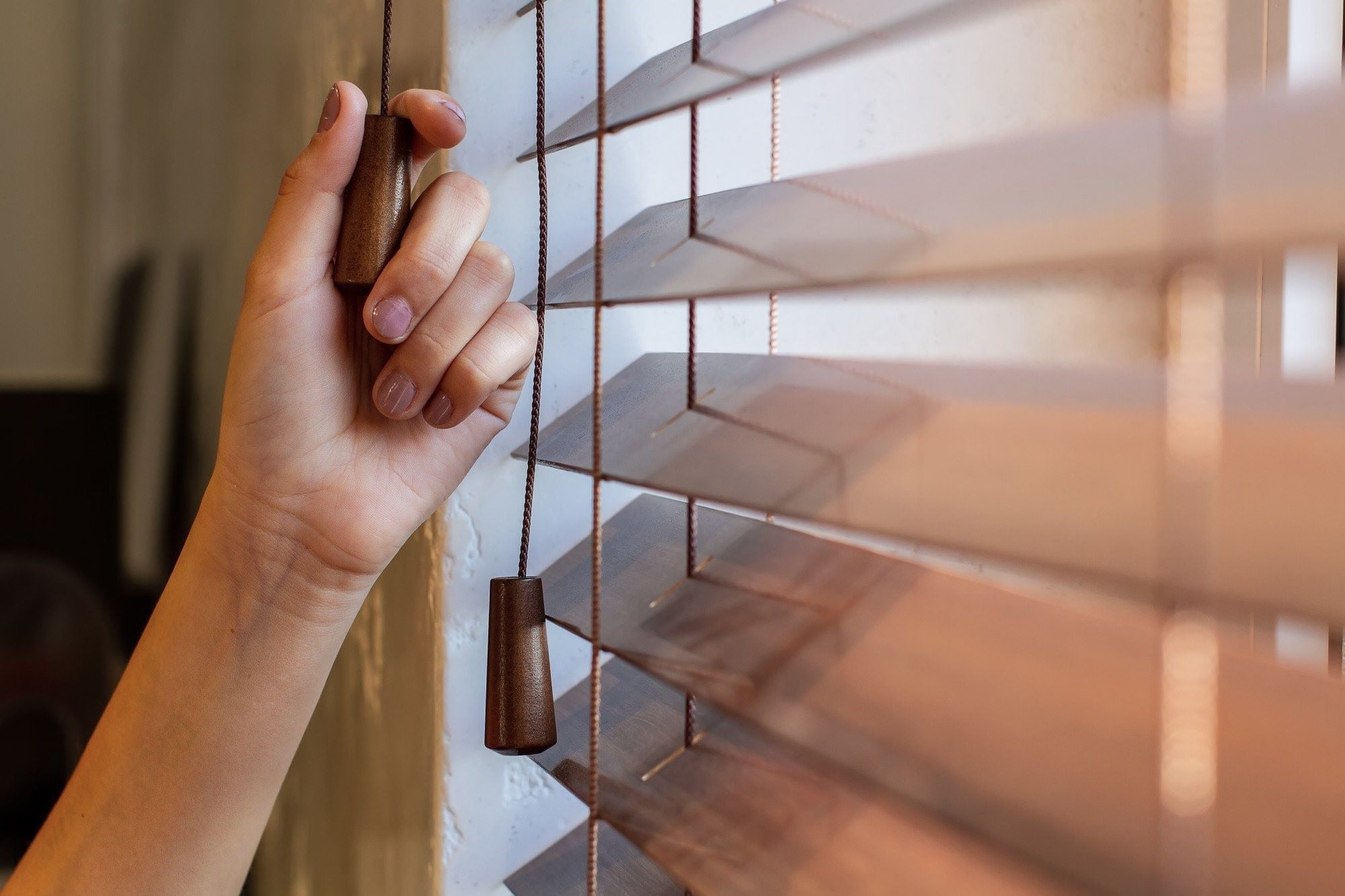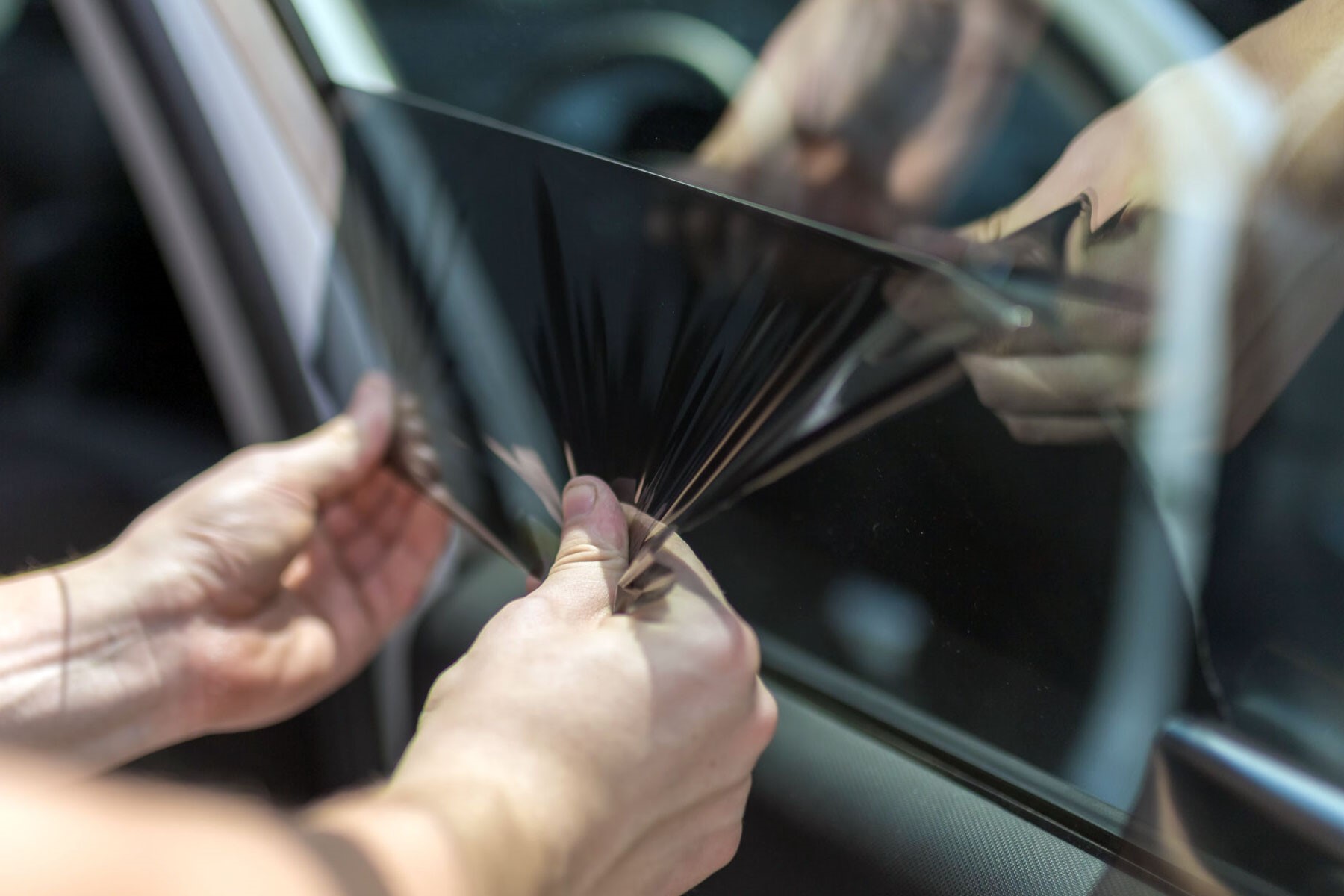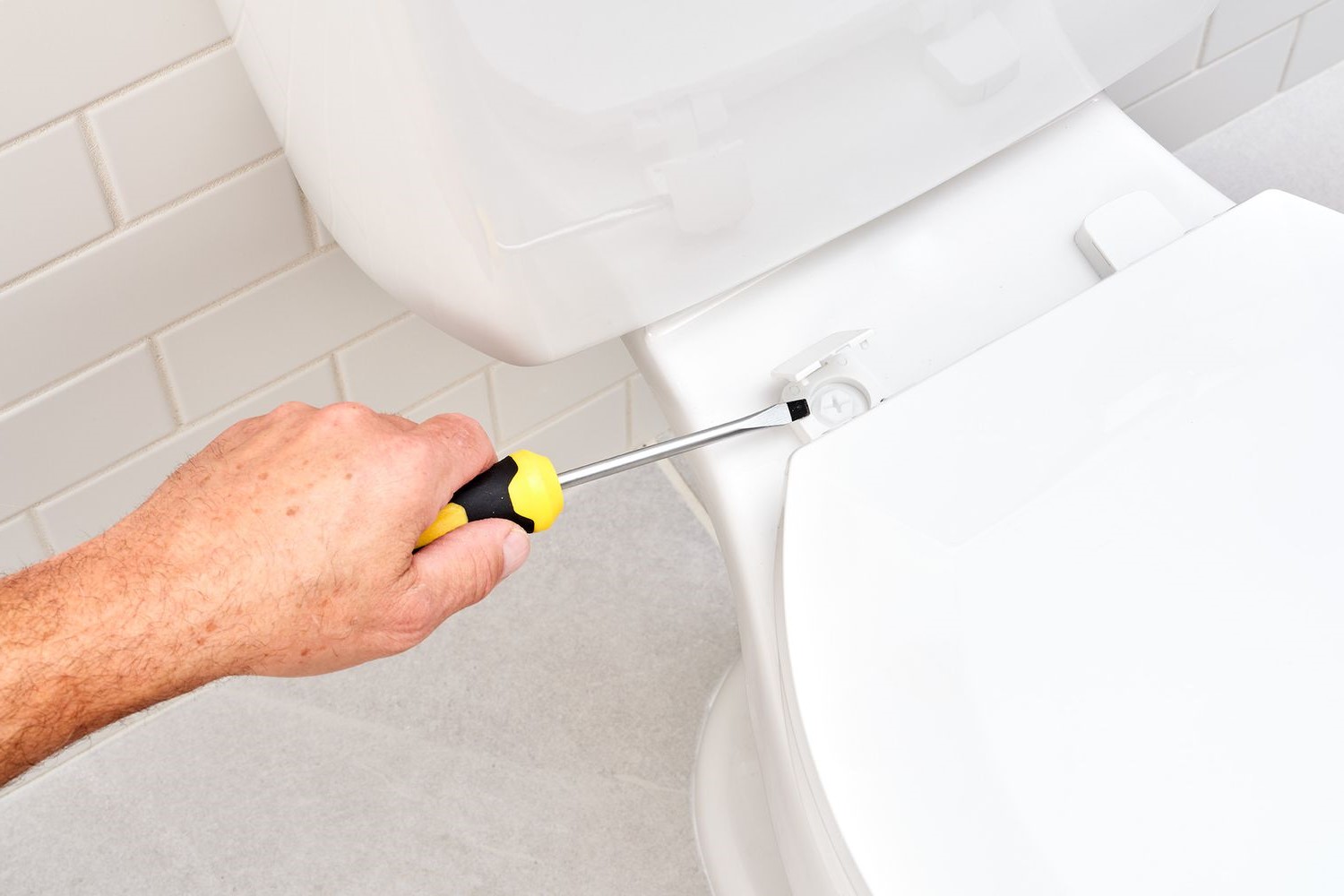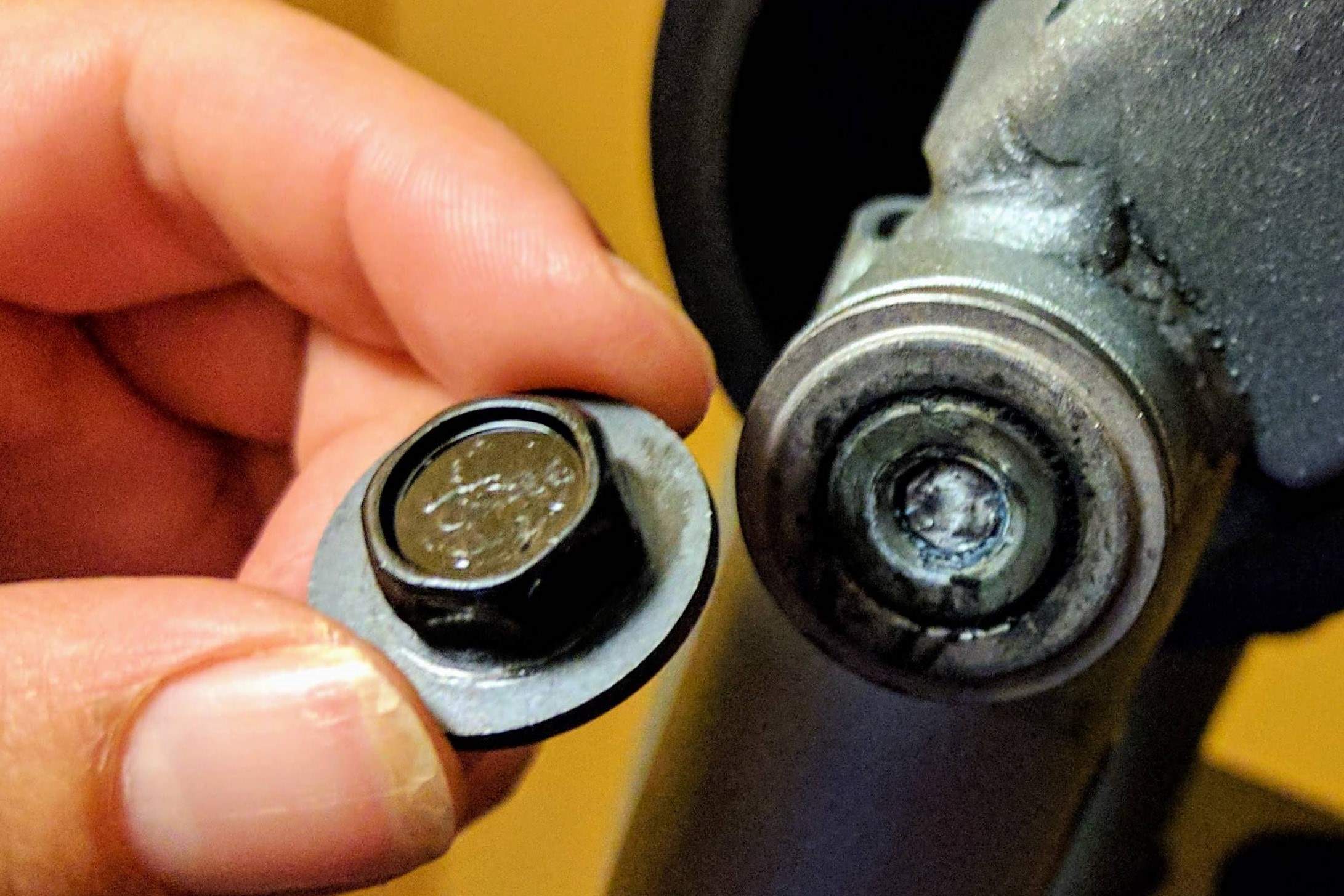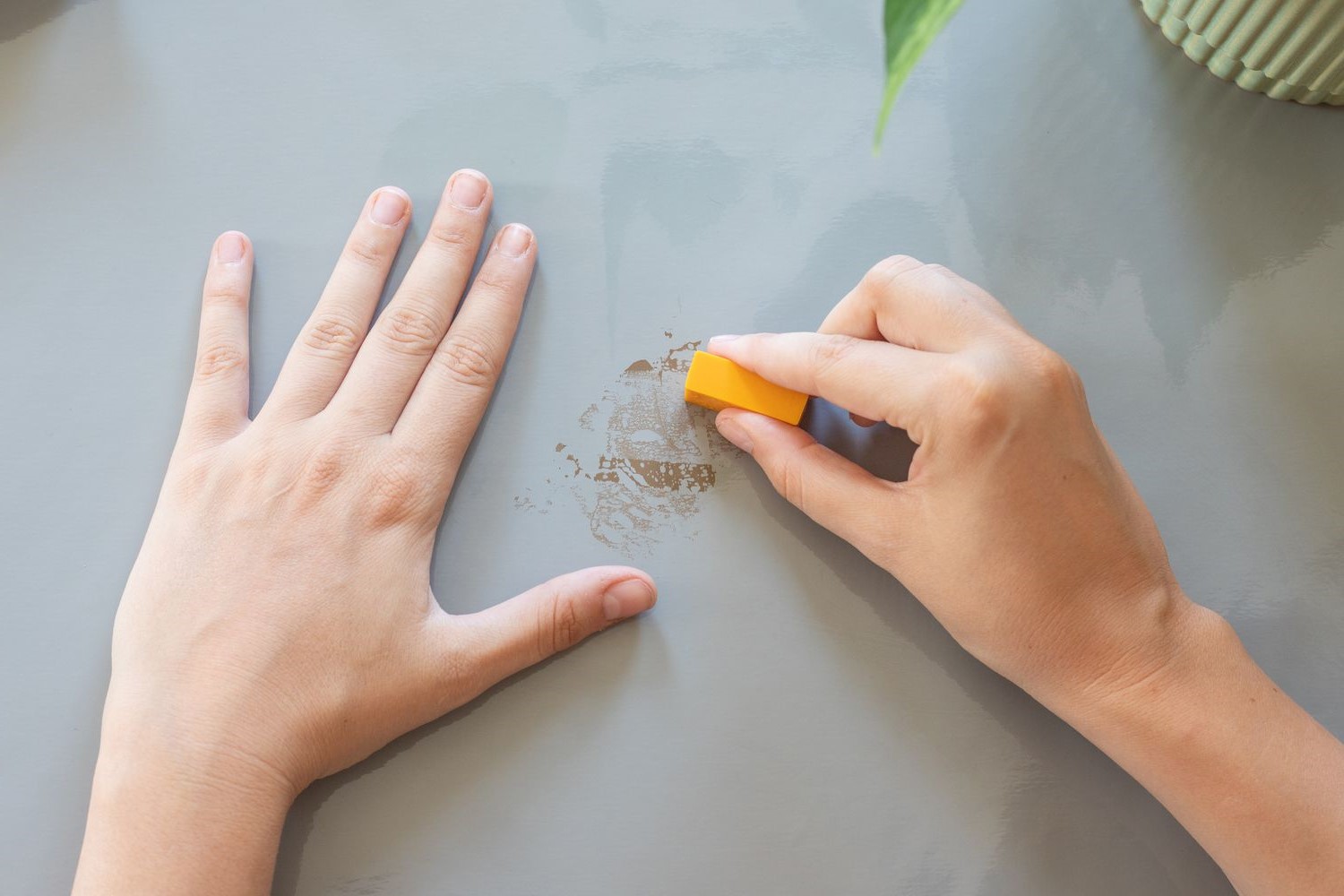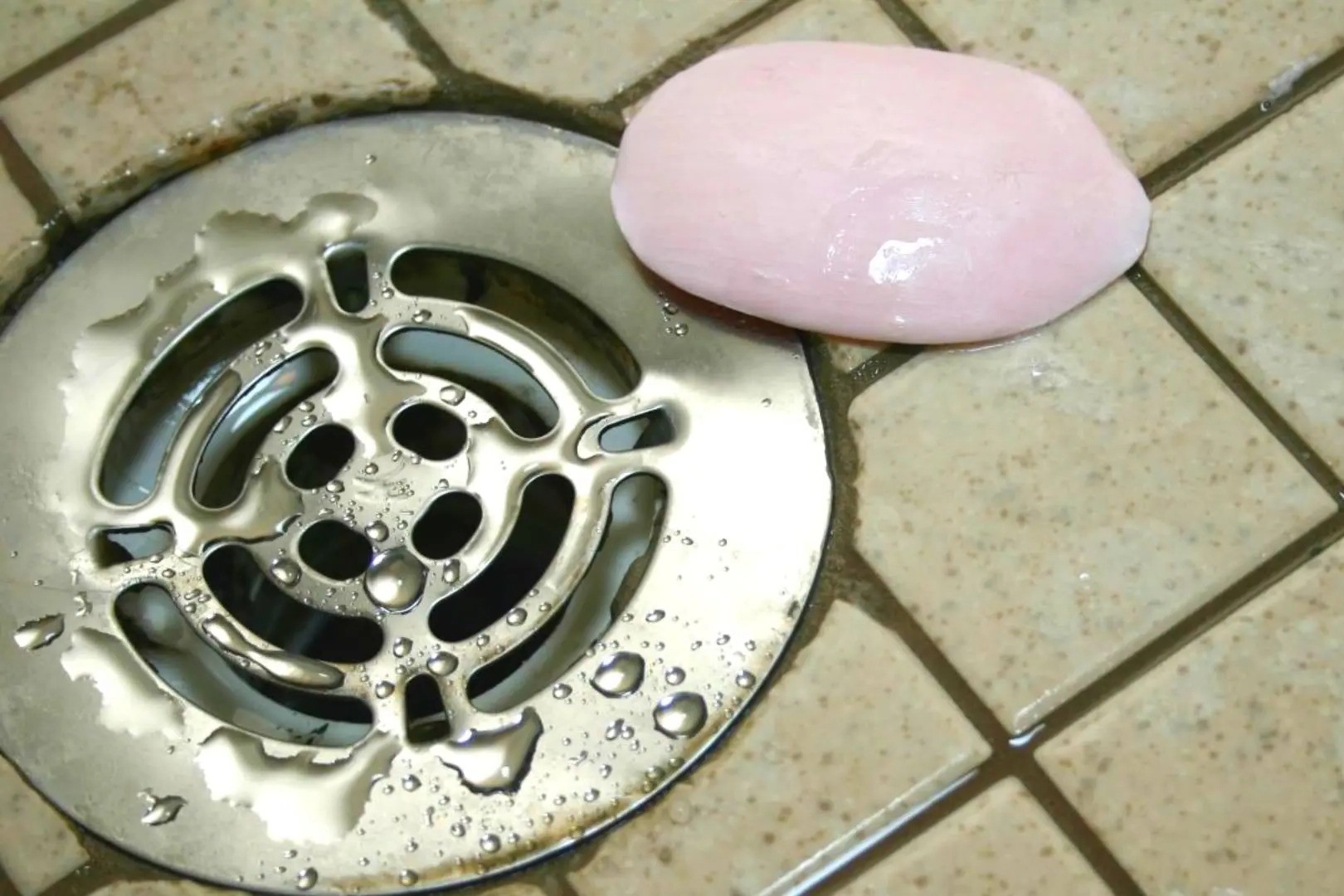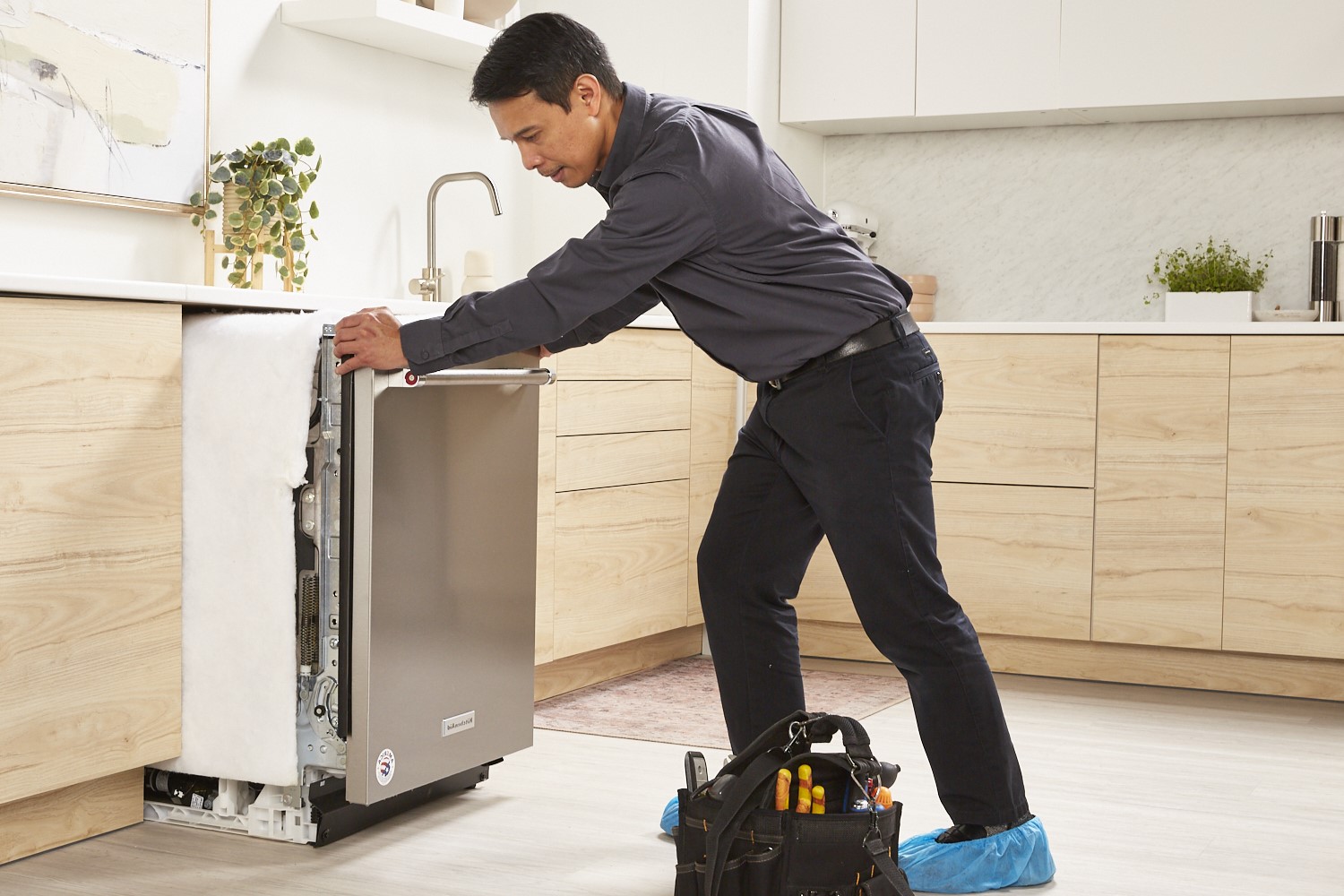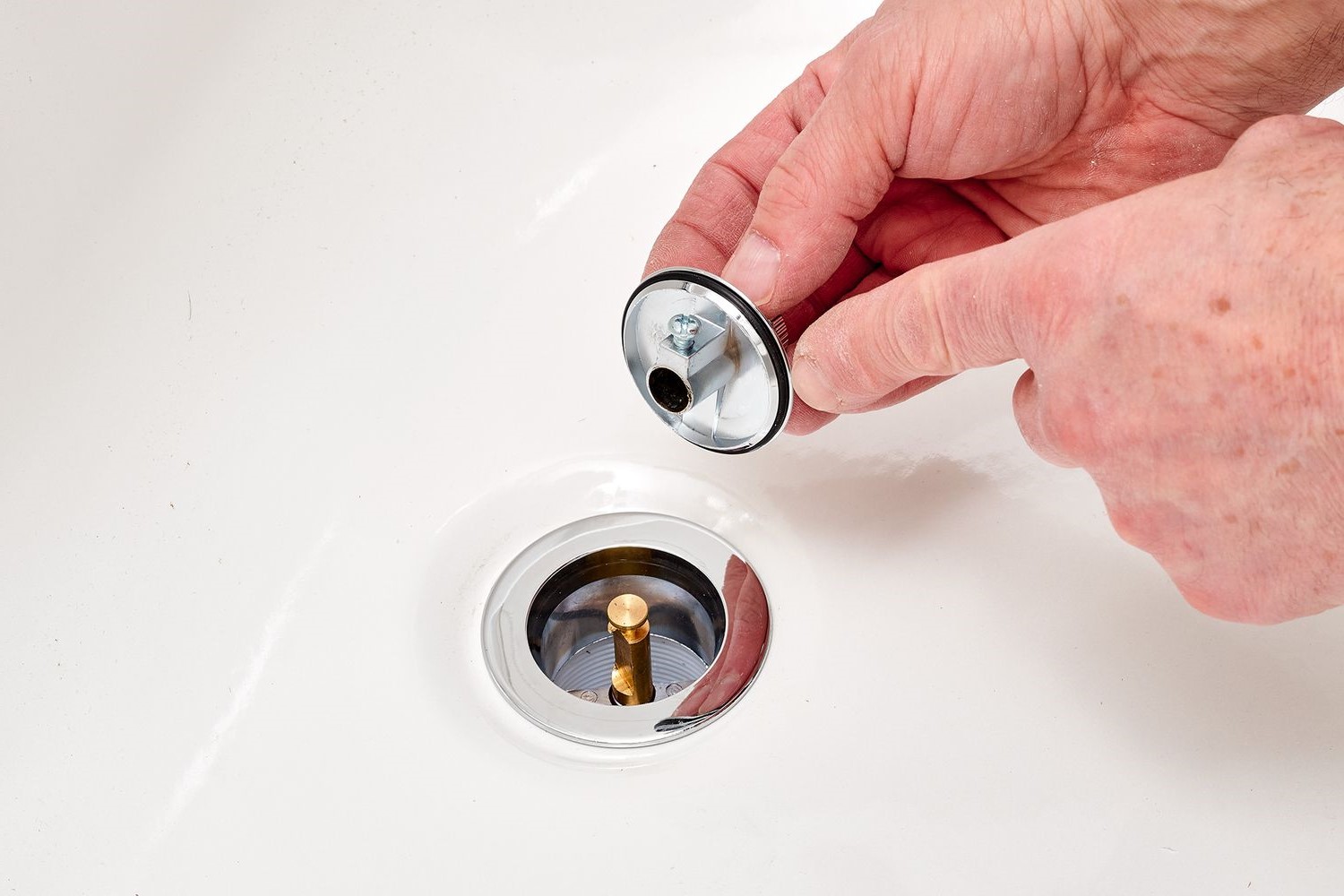Home>Home and Garden>How To Remove Rusted Screws
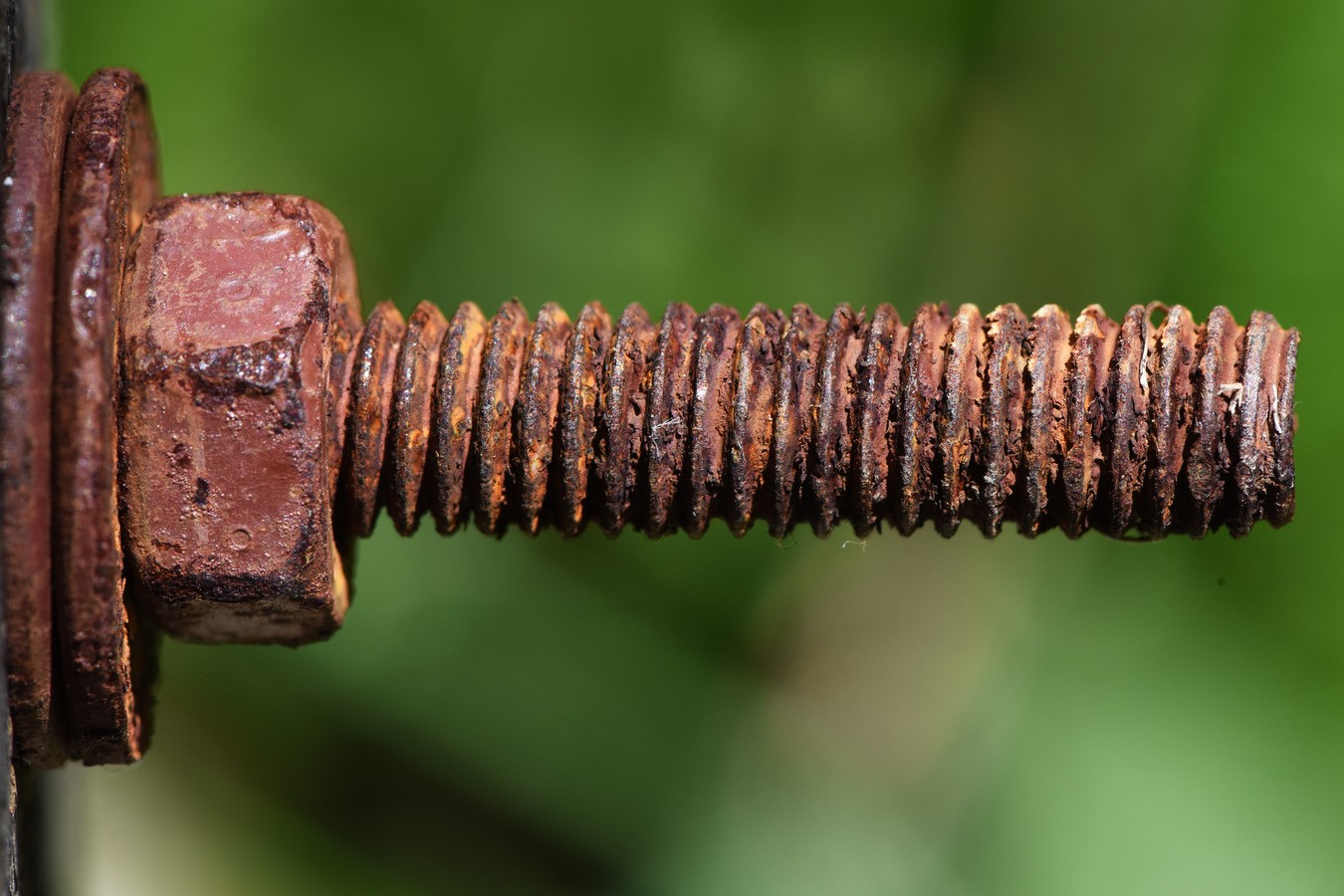

Home and Garden
How To Remove Rusted Screws
Published: March 1, 2024
Learn effective techniques for removing rusted screws in your home and garden projects. Discover expert tips and tools for hassle-free screw removal.
(Many of the links in this article redirect to a specific reviewed product. Your purchase of these products through affiliate links helps to generate commission for Noodls.com, at no extra cost. Learn more)
Table of Contents
Introduction
Dealing with rusted screws can be a frustrating and challenging task, especially when attempting to disassemble or repair items around the home or garden. Over time, exposure to moisture and air can cause metal screws to corrode, making them difficult to remove. However, with the right tools and techniques, it is possible to tackle this common issue effectively.
In this comprehensive guide, we will explore various methods for removing rusted screws, providing you with the knowledge and confidence to tackle this problem head-on. Whether you are a seasoned DIY enthusiast or a novice homeowner, understanding how to address rusted screws can save you time, effort, and potential frustration.
By learning about the underlying causes of rusted screws and the appropriate tools and methods for their removal, you can approach this task with a clear plan and the necessary expertise. With the insights and practical tips shared in this guide, you will be equipped to handle rusted screws in a variety of home and garden settings, from furniture and fixtures to outdoor equipment and structures.
So, let's dive into the world of rusted screws and discover the effective strategies and techniques that will empower you to tackle this common challenge with confidence and success. Whether you are facing a minor inconvenience or a major repair project, the knowledge gained from this guide will prove invaluable in your DIY endeavors.
Read more: How To Remove A Broken Screw
Understanding Rusted Screws
Rusted screws are a common nuisance encountered in various home and garden projects. Understanding the nature of rust and its impact on screws is crucial for effectively addressing this issue. When metal screws are exposed to moisture and oxygen over time, a chemical reaction occurs, leading to the formation of rust. This reddish-brown substance, known as iron oxide, weakens the structural integrity of the metal, causing it to corrode and become brittle.
The presence of rust on screws can make them difficult to remove, as the corrosion effectively bonds the screw threads to the surrounding material. This can be particularly problematic when attempting to disassemble furniture, repair outdoor fixtures, or work on DIY projects. The stubborn nature of rusted screws often leads to frustration and the risk of damaging the surrounding surfaces if not handled properly.
It's important to recognize that rusted screws not only impede the progress of a project but also pose potential safety hazards. For instance, rusted screws in outdoor structures or equipment may compromise their stability and structural integrity, posing risks to individuals using or interacting with these items.
Furthermore, the presence of rust can indicate underlying issues with the materials or environment in which the screws are located. It may signal excessive moisture, poor ventilation, or exposure to harsh weather conditions, all of which can accelerate the corrosion process.
By gaining a deeper understanding of the factors contributing to rusted screws, individuals can approach the removal process with greater insight and preparedness. Recognizing the impact of rust on screws and the potential implications for safety and structural integrity underscores the importance of addressing this issue promptly and effectively.
In the following sections, we will explore various methods and techniques for removing rusted screws, equipping you with the knowledge and practical skills needed to tackle this common challenge in home and garden settings.
Tools and Materials Needed
When it comes to dealing with rusted screws, having the right tools and materials at your disposal is essential for a successful removal process. Here's a comprehensive list of items you'll need to effectively tackle rusted screws:
1. Penetrating Oil:
- Penetrating oil is a vital tool for loosening rusted screws. It works by seeping into the microscopic gaps between the screw threads and the surrounding material, breaking down the rust and corrosion. Look for a high-quality penetrating oil specifically designed for rust removal.
2. Heat Source:
- A heat source, such as a propane torch or a heat gun, can be invaluable for loosening stubborn rusted screws. By applying targeted heat to the screw and surrounding area, you can expand the metal, breaking the bond between the screw and the material it's embedded in.
Read more: How To Remove A Stripped Allen Screw
3. Screw Extractor:
- A screw extractor, also known as an easy out, is a specialized tool designed to grip and remove stripped or damaged screws. It features a tapered, spiral design that bites into the screw as you turn it, allowing for extraction without damaging the surrounding material.
4. Hammer and Punch:
- In some cases, a hammer and punch may be necessary to tap the rusted screw and create enough force to break it loose. This method is particularly useful when dealing with larger screws or those deeply embedded in the material.
5. Pliers or Vice Grips:
- Pliers or vice grips can provide additional gripping power when attempting to turn a rusted screw. Their adjustable jaws allow for a secure grip on the screw head, enabling you to apply torque and gradually loosen the stubborn fastener.
6. Safety Gear:
- Safety should always be a priority when working with rusted screws. Ensure you have appropriate safety gear, including gloves and eye protection, to shield yourself from potential hazards during the removal process.
Read more: How To Remove Rust From A Gun
7. Cleaning Supplies:
- Once the rusted screws are successfully removed, cleaning the surrounding area and the screws themselves is essential. Have cleaning supplies such as a wire brush, rust remover, and lubricant on hand to prepare the surface for reassembly or further maintenance.
By assembling these tools and materials, you'll be well-equipped to tackle rusted screws in a variety of home and garden scenarios. Each item plays a crucial role in the removal process, offering versatility and effectiveness in addressing different degrees of rust and corrosion. With these tools at your disposal, you'll have the confidence to take on rusted screws and restore functionality to your projects and equipment.
Methods for Removing Rusted Screws
When it comes to tackling rusted screws, employing the right methods is essential for successful removal. The following techniques offer effective approaches to address rusted screws in various home and garden settings:
Using Penetrating Oil
Penetrating oil is a go-to solution for loosening rusted screws. Its ability to seep into the microscopic gaps between the screw threads and the surrounding material makes it a valuable tool in the removal process. To use penetrating oil effectively, apply it generously to the rusted screw, ensuring that it penetrates the corroded areas. Allow sufficient time for the oil to work its magic, typically several hours or overnight. This allows the oil to break down the rust and corrosion, significantly easing the removal process. For stubborn screws, multiple applications may be necessary to achieve the desired results.
Applying Heat
The application of targeted heat can be a game-changer when dealing with stubborn rusted screws. A propane torch or a heat gun can be used to apply heat directly to the screw and the surrounding area. The goal is to expand the metal, breaking the bond between the screw and the material it's embedded in. When using this method, exercise caution to avoid overheating or damaging the surrounding surfaces. Once the metal has expanded due to the application of heat, the rusted screw can be more easily loosened using a screwdriver or other appropriate tools.
Using a Screw Extractor
When conventional methods fail to loosen a rusted screw, a screw extractor, also known as an easy out, can come to the rescue. This specialized tool features a tapered, spiral design that bites into the screw as it is turned, allowing for extraction without damaging the surrounding material. To use a screw extractor, drill a small hole into the center of the rusted screw, then insert the extractor and turn it counterclockwise. The extractor's gripping action will gradually free the stubborn screw, providing a reliable solution for deeply embedded or damaged fasteners.
Using a Hammer and Punch
In some instances, a hammer and punch can be employed to dislodge rusted screws that are firmly stuck in place. By carefully tapping the screw with a hammer and punch, you can create enough force to break it loose from the surrounding material. This method is particularly useful for larger screws or those deeply embedded in wood or metal. Exercise caution and precision when using this technique to avoid damaging the surrounding surfaces or causing the screw to break off, complicating the removal process.
By employing these methods, individuals can effectively address rusted screws in a variety of home and garden scenarios, from furniture and fixtures to outdoor equipment and structures. Each technique offers a unique approach to loosening and removing rusted screws, providing DIY enthusiasts and homeowners with the versatility and expertise needed to tackle this common challenge with confidence and success.
Using Penetrating Oil
Penetrating oil is a highly effective and widely used solution for loosening rusted screws. Its ability to seep into the microscopic gaps between the screw threads and the surrounding material makes it an invaluable tool in the removal process. When confronted with stubborn rusted screws, the application of penetrating oil can significantly ease the extraction process, saving time and effort.
To utilize penetrating oil effectively, begin by applying it generously to the rusted screw, ensuring that it thoroughly saturates the corroded areas. The oil's penetrating properties allow it to work its way into the tight spaces between the screw threads and the surrounding material, effectively breaking down the rust and corrosion. This process typically requires time for the oil to exert its effects, often several hours or even overnight. Allowing the penetrating oil sufficient time to work its magic is crucial for achieving optimal results, especially with heavily rusted or corroded screws.
For particularly stubborn screws, multiple applications of penetrating oil may be necessary to fully penetrate and loosen the rusted fastener. Patience is key when using this method, as the gradual action of the oil on the rust and corrosion yields the best outcomes. Additionally, gently tapping the rusted screw with a hammer after applying the penetrating oil can help facilitate its penetration into the corroded areas, further enhancing the effectiveness of the oil in loosening the fastener.
The beauty of using penetrating oil lies in its ability to work its way through the toughest rust and corrosion, effectively breaking the bond between the screw and the surrounding material. This makes the subsequent removal process notably smoother and lessens the risk of damaging the surrounding surfaces. By patiently allowing the penetrating oil to permeate the rusted screw, DIY enthusiasts and homeowners can significantly improve their chances of successfully extracting stubborn fasteners, ultimately saving time, effort, and potential frustration.
In summary, the application of penetrating oil is a tried-and-true method for addressing rusted screws, offering a reliable and efficient approach to loosening and removing stubborn fasteners. By harnessing the penetrating properties of this specialized oil, individuals can navigate the challenges posed by rusted screws with confidence and expertise, ensuring successful outcomes in a variety of home and garden scenarios.
Applying Heat
Applying heat is a highly effective technique for loosening stubborn rusted screws, particularly those that have been firmly bonded to the surrounding material due to extensive corrosion. By subjecting the rusted screw and its immediate surroundings to targeted heat, the metal expands, breaking the bond between the screw threads and the material in which they are embedded. This method is particularly useful when dealing with deeply rusted or seized screws that have resisted conventional removal attempts.
To apply heat effectively, a propane torch or a heat gun can be utilized to direct heat specifically onto the rusted screw. It is essential to exercise caution and precision when using this method to avoid overheating or damaging the surrounding surfaces. Additionally, it is advisable to wear appropriate safety gear, including heat-resistant gloves and eye protection, to shield against potential hazards during the application of heat.
When using a propane torch, adjust the flame to a moderate level and carefully direct the heat onto the rusted screw, moving the flame in a controlled manner to ensure even heating. It is important to avoid prolonged exposure to heat in one area, as this can lead to damage or discoloration of the surrounding material. With a heat gun, set the temperature to a suitable level and maintain a consistent distance between the tool and the rusted screw to achieve uniform heating.
As the targeted heat is applied, the metal components expand, causing the rusted screw to gradually loosen its grip on the surrounding material. This expansion effectively breaks the bond created by the corrosion, making it easier to turn and extract the fastener using appropriate tools. It is important to allow the heated area to cool slightly before attempting to manipulate the rusted screw, as the metal contracts upon cooling, further aiding in the loosening process.
The application of heat offers a versatile and reliable approach to addressing rusted screws, providing a valuable alternative to conventional removal methods. By harnessing the power of targeted heat, DIY enthusiasts and homeowners can effectively tackle the challenges posed by stubborn rusted screws, restoring functionality to various items and equipment in home and garden settings.
Read more: How To Get Rust Off Blackstone
Using a Screw Extractor
When conventional methods fail to loosen a rusted screw, a screw extractor, also known as an easy out, can be a game-changing tool in the removal process. This specialized tool is designed to grip and remove stripped or damaged screws, offering a reliable solution for deeply embedded or stubborn fasteners.
The screw extractor features a unique tapered, spiral design that enables it to bite into the metal of the rusted screw as it is turned counterclockwise. This gripping action allows the extractor to gradually free the stubborn screw from the surrounding material, facilitating its extraction without causing damage.
To utilize a screw extractor effectively, the first step is to create a small pilot hole in the center of the rusted screw using a drill bit. It is crucial to select a drill bit size that corresponds to the specifications provided with the screw extractor, ensuring a proper fit for the extractor's subsequent insertion.
Once the pilot hole is established, the screw extractor is inserted into the drilled cavity, ensuring a secure and snug fit. With the extractor in place, a suitable wrench or T-handle is used to turn the extractor counterclockwise, applying gradual and controlled force to dislodge the rusted screw.
As the screw extractor engages with the metal of the rusted screw, its tapered, spiral design allows it to bite deeper into the fastener, effectively breaking the bond created by the corrosion. This process enables the extractor to steadily loosen and extract the stubborn screw, providing a reliable and non-destructive solution for addressing rusted fasteners.
It is important to exercise patience and precision when using a screw extractor, as the gradual turning motion is essential for allowing the extractor to grip the rusted screw securely. Additionally, ensuring that the extractor remains aligned with the axis of the rusted screw is crucial for preventing slippage and potential damage to the surrounding material.
The use of a screw extractor offers a versatile and effective approach to addressing rusted screws, providing DIY enthusiasts and homeowners with a valuable tool for tackling challenging removal tasks. By harnessing the gripping power and precision of a screw extractor, individuals can confidently navigate the complexities of rusted fasteners, ultimately achieving successful outcomes in a variety of home and garden scenarios.
Using a Hammer and Punch
When faced with particularly stubborn rusted screws that have resisted conventional removal methods, employing a hammer and punch can provide an effective solution. This technique involves using controlled force to dislodge the rusted screw from the surrounding material, allowing for its eventual extraction.
To begin, it is essential to select a suitable punch that matches the size of the screw head and provides a precise point of contact. Additionally, ensuring that the punch is made of durable and robust material, such as hardened steel, is crucial for withstanding the force exerted during the removal process.
With the appropriate punch in hand, the next step is to carefully position it at the center of the rusted screw head. The punch is then tapped gently with a hammer to create a starting point for the application of force. It is important to exercise caution and precision when using this method, as excessive force or misalignment can lead to damage to the surrounding material or the screw itself.
Once the initial indentation is created, the punch is positioned at a slight angle to the screw head, allowing for a gradual increase in force as the tapping motion continues. This angled approach helps to create a rotational force, effectively loosening the rusted screw from its embedded position. It is crucial to maintain a consistent and controlled tapping rhythm, ensuring that the force is applied evenly and progressively to facilitate the loosening process.
As the tapping motion continues, the combination of rotational force and controlled impact gradually breaks the bond between the rusted screw and the surrounding material. This allows the screw to begin loosening, making it more manageable to extract using appropriate tools such as pliers or a screwdriver.
The use of a hammer and punch offers a practical and accessible method for addressing rusted screws, providing DIY enthusiasts and homeowners with an additional tool in their arsenal for tackling challenging removal tasks. By harnessing the controlled force and precision of a hammer and punch, individuals can confidently navigate the complexities of rusted fasteners, ultimately achieving successful outcomes in a variety of home and garden scenarios.
Conclusion
In conclusion, the process of removing rusted screws is a common challenge encountered in various home and garden projects. The presence of rust on screws can impede the progress of repairs, maintenance, and DIY endeavors, often leading to frustration and potential safety hazards. However, armed with the right knowledge, tools, and techniques, individuals can effectively address this issue and restore functionality to a wide range of items and equipment.
Understanding the underlying causes of rusted screws, such as exposure to moisture and oxygen, is crucial for devising effective removal strategies. The impact of rust on screws goes beyond mere inconvenience, as it can signal underlying issues with materials and environments, potentially compromising safety and structural integrity.
By utilizing penetrating oil, applying heat, using a screw extractor, or employing a hammer and punch, individuals can tackle rusted screws with confidence and expertise. Each method offers a unique approach to loosening and removing stubborn fasteners, providing versatility and effectiveness in addressing different degrees of rust and corrosion.
The application of penetrating oil allows for the gradual breakdown of rust and corrosion, significantly easing the extraction process. Similarly, the targeted application of heat expands the metal, breaking the bond between the screw and the surrounding material, offering a reliable solution for stubborn rusted screws. Additionally, the use of a screw extractor and the technique of employing a hammer and punch provide specialized tools and methods for addressing deeply embedded or resistant fasteners.
By assembling the necessary tools and materials and understanding the intricacies of each removal method, individuals can approach the challenge of rusted screws with preparedness and confidence. The successful removal of rusted screws not only facilitates repairs and maintenance but also contributes to a safer and more functional home and garden environment.
In essence, the knowledge and techniques shared in this guide empower DIY enthusiasts and homeowners to navigate the complexities of rusted screws, ultimately achieving successful outcomes in a variety of home and garden scenarios. With the right approach and a willingness to tackle challenges head-on, rusted screws no longer need to be a source of frustration, but rather an opportunity to showcase expertise and resourcefulness in home and garden maintenance and repair.
